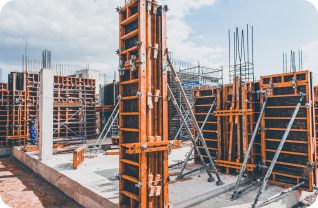Project #20
In areas where the ground is elevated, the “cut” process involves removing excess soil to bring the land down to the desired level. This can often involve the use of heavy machinery like excavators and bulldozers, which efficiently dig and scrape away layers of earth. Depending on the project’s requirements and the site’s geological conditions, this can mean removing just a few inches of topsoil or digging several feet down.
Conversely, in depressions or lower-lying areas of the plot, the “fill” process is employed. Soil, often sourced from the “cut” areas of the same site, is added to these sections. The fill material is spread in layers, and each layer is compacted to ensure stability. Proper compaction is crucial, as poorly compacted fill can lead to uneven settling over time, which can adversely affect the integrity of any structure built upon it.
The cut and fill process requires careful planning and execution. Before any excavation work begins, surveyors typically assess the site to determine the existing topography. This helps in calculating the volume of soil that will be cut and the volume required for filling. The aim is often to achieve a balance, minimizing the need to bring in external soil or dispose of excess soil off-site, which can be both expensive and environmentally unfriendly.


